How to prepare for an acoustic guitar recording
May 16, 2025 | News
Essential Tips to Prepare for an Acoustic Guitar Recording
First thing you want to do is make sure that your guitar is set up correctly, and there is no buzzing or dead notes.
Double check the frets are level, as uneven frets can cause poor intonation and tuning. I suggest asking a guitar luthier to inspect and level the frets if necessary. Additionally, consider a professional setup before recording to optimize playability and sound quality.
It’s also worth restringing your acoustic guitar, as this will give you a much brighter sound which will be picked up on the microphone. Once your guitar is restrung, make sure that your strings are stretched in and tuned properly. Old strings tend to Intonate poorly, so it’s worth having new strings as it will make the recording process much smoother.
For the recording itself, I’d recommend having a floor pedal tuner such as the boss TU-3 or the Peterson Strobo stomp. These are industry standard tuners which will help keep your Guitar in tune. When I’m being recorded by a microphone, I plug my guitars DI output into my tuner so I can tune in between takes if needed. Make sure you tune with the capo on, as it can make the strings go slightly sharp. (Demo with capo)
Your acoustic guitars tuning is also highly sensitive to temperature changes. This can be caused by things such as air conditioning turning on and off, or extended playing over several hours.
To enhance your guitar’s tuning stability, consider upgrading to a graphite nut. This prevents strings from digging into the nut and slipping during recording or tuning.
If a graphite nut isn’t available, you can apply pencil lead (graphite) to the existing nut’s slots to reduce string friction, and prevent sudden string slipping.
Another option is a graphite bridge that can further stabilize tuning.
Guitar Setup for Recording
If using your own condenser microphone, the basic technique is to point the microphone at the 12th fret. As a general rule, I use thumb to pinky to measure the distance.
Make sure you can hear yourself clearly, as recording acoustic guitar with headphones on is completely different to recording electric guitar.
I recommend using closed back headphones, as this will help with sound isolation and help minimise spill during the recording.
To avoid issues with headphone bleed and spill, particularly from loud click tracks being picked up by the microphone. Ensure your headphones fit snugly, and keep your mix at a moderate volume to prevent sound leakage into the mic.
To help prepare for your recording session, practice at home to familiarize yourself with the recording environment. I tend to set the gain so that my input signal on Logic is between 9 and 12. You might have to boost the gain for a finger style part with a quieter signal.
Try not to breathe loudly during takes, as this will be picked up by the microphone.
For maintaining recording quality, use a noise-isolated room to prevent external sounds from being captured by the microphone. An acoustically treated room is even better, as it minimizes unwanted reverb or echo on your guitar track. This allows the producer or engineer to add these effects during mixing.







